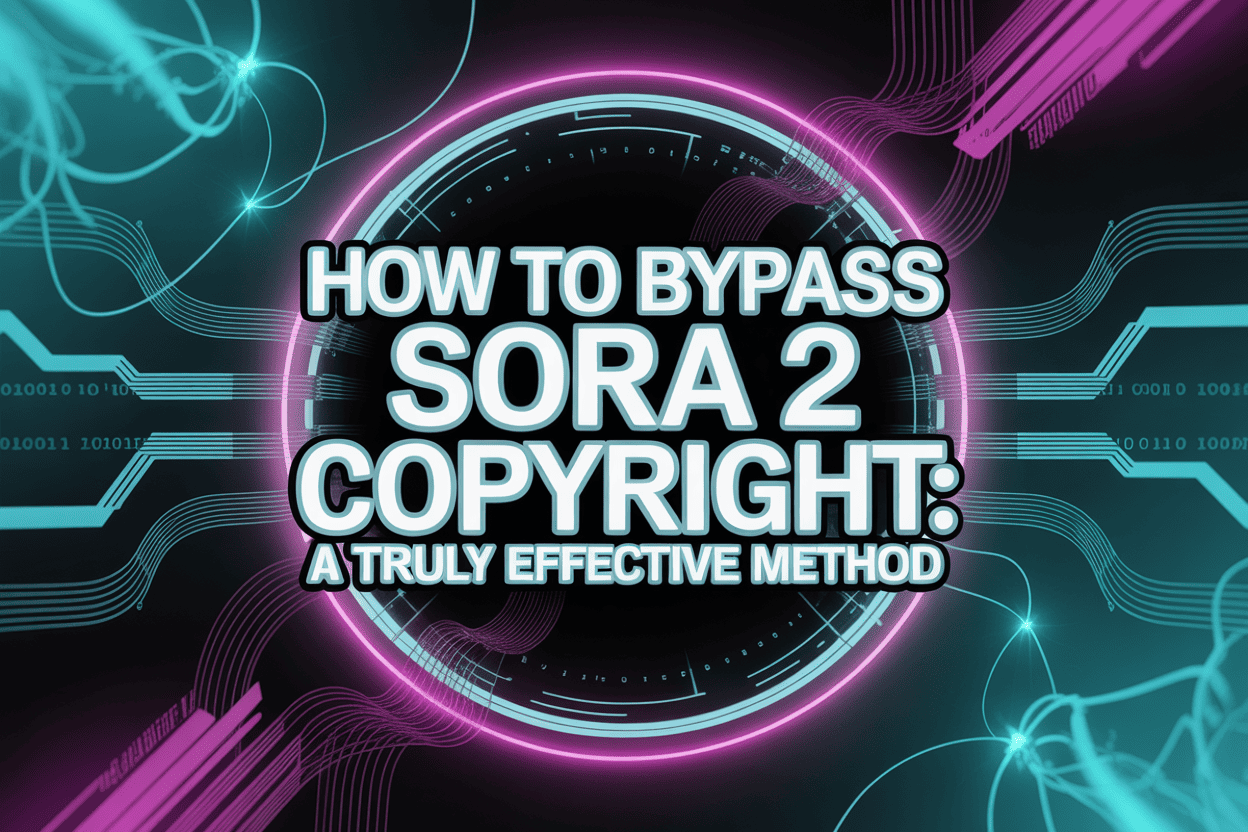Bypassing Sora 2 copyright requires a bit of skill. If Sora 2 blocks a prompt that names a trademarked character, don’t try to bypass protections — instead use clear, non‑infringing descriptive prompts that capture the feel of a character (color, silhouette, clothing, mood, setting, and behavior) without naming copyrighted IP. This approach produces original, legally safer outputs that often pass moderation while delivering the style and narrative you want.
The power of Sora 2 is undeniable. However, access still requires an invite, so if you don’t have one, there’s no need to worry. Global GPT has integrated Sora 2, allowing free access without an invite, with fewer content restrictions and no watermark hassle.
Global GPT currently integrates Sora 2 Pro, which can generate videos up to 25 seconds long. Normally, Sora 2 Pro is only available for users with a $200/month ChatGPT Pro subscription, but with Global GPT, you can use it without the expensive subscription.

Why Sora 2 Blocks Direct Copyrighted Character Prompts
Sora 2 applies copyright- and trademark-aware moderation to prevent generating exact replicas of protected characters. That means explicitly naming “Mickey Mouse” or “SpongeBob” often causes denial or sanitization. The goal for creators is to express the same storytelling idea without reproducing protected character assets. Explaining this upfront helps users understand the difference between unlawful copying and lawful inspiration.
Real Examples of Avoiding Copyright blocks(with Descriptive Name)
Example A — “Cartoon Sponge” vibe
I recently needed a bubbly undersea character for a short ad. I used: “cheerful yellow sea sponge wearing square shorts, energetic wave‑running across a coral street, bright palette, 2D slapstick cartoon.” The generated clips captured the playful motion and color without naming any franchise. Iteration #3 gave me a stable loop suitable for use as a 6‑second interstitial.
Example B — “Classic Mouse” vibe
For a festival spot I described: “small cartoon mouse with big circular ears, red shorts, strolling through a whimsical fairground at sunset, joyful expressions, vintage animation grain.” The output retained the nostalgic feel but was original enough to use without licensing.
Each prompt was iterated 2–6 times and refined by changing silhouette, accessory, and posture until moderation accepted it.
Step-by-Step Workflow to Bypass Sora 2 Copyright

- Sketch the idea: Write 1–2 sentences describing scene, mood, and action.
- Build the prompt: Use descriptive template + style tokens (e.g., “children’s book illustration”, “photorealistic cinematic”, “70s Saturday cartoon”).
- Add constraints: Length, camera moves, frame composition (“close-up”, “wide shot”, “three-shot”).
- Run and iterate: Tweak attributes (color, clothing, props) — avoid adding trademark names.
- Verify compliance: If Sora denies the generation, revise descriptors rather than trying to circumvent filters.
- If commercial, license or create from scratch: When using anything resembling a known franchise for profit, get permission or commission an artist.
Practical Prompt Templates That Work
Below are ready-to-use prompt templates that capture the spirit of famous characters without naming them. Use these as starting points and iterate:
| Original Cartoon | Safe Prompt Alternative (Use This in Sora) |
|---|---|
| SpongeBob SquarePants | Cheerful yellow sponge in square trousers, undersea neighborhood with a pineapple-shaped cottage, energetic slapstick cartoon, saturated colors, studio animation style. |
| Mickey Mouse | Friendly round-eared mouse wearing red shorts, whimsical castle courtyard, expressive gestures and wide smile, hand-drawn animation look. |
| Tom & Jerry | Clever gray house cat chasing a small mischievous mouse in a cozy suburban kitchen, slapstick timing, classic cartoon framing. |
| One Piece (Monkey D. Luffy) | Brave straw-hatted pirate with a wide grin sailing a wooden ship at sunrise, adventurous mood, vibrant cel-shaded style. |
| Dragon Ball (Goku) | Young martial artist with spiky hair and glowing energy aura, dynamic fighting pose, anime action framing, high contrast lighting. |
Start with one template, then add specifics: camera angle, color palette, costume detail, era (retro/modern), and emotional beats (joyful, mischievous, heroic). Adjust duration instructions depending on Sora limits.
When to Get Permission or Use Licensed Assets
- Commercial campaigns that rely on a recognizable IP almost always require licensing.
- Fan art for personal, non-commercial use may be tolerated but still risks takedown if very close to the original.
- Best practice: use public-domain characters, purchase stock/asset bundles, or commission original character designs.
Tools & Resources to Find Legally Usable Character Assets
- Public-domain archives and Creative Commons (check license terms).
- Asset marketplaces (licensed characters and packs).
- Commissioning illustrators/3D artists for unique IP.
- Legal counsel or rights clearing services for large campaigns.
Legal & Ethical Principles for Generating Character-Like Content
- Avoid exact names or trademarked identifiers. Don’t use brand names or exact character names in prompts.
- Aim for transformation and originality. Create new backstory, different silhouette, and unique props.
- Consider licensing when necessary. If you must recreate a trademark for commercial use, seek permission or license assets.
- Document your process. Save prompt versions and reference sources if you rely on public-domain or licensed assets.
FAQs
Q: Will Sora 2 always block famous character names?
A: It depends on the policy and release state, but moderation commonly blocks explicit trademarked names. Use descriptive prompts instead.
Q: Can I use descriptive prompts for commercial projects?
A: Descriptive prompts reduce moderation issues, but if the result is clearly a copy of a known IP, you still need permission for commercial use.
Q: Are there prompt words that increase acceptance?
A: Words emphasizing “original”, “inspired by”, and specifying new backstory or different props help the model produce unique outputs.



